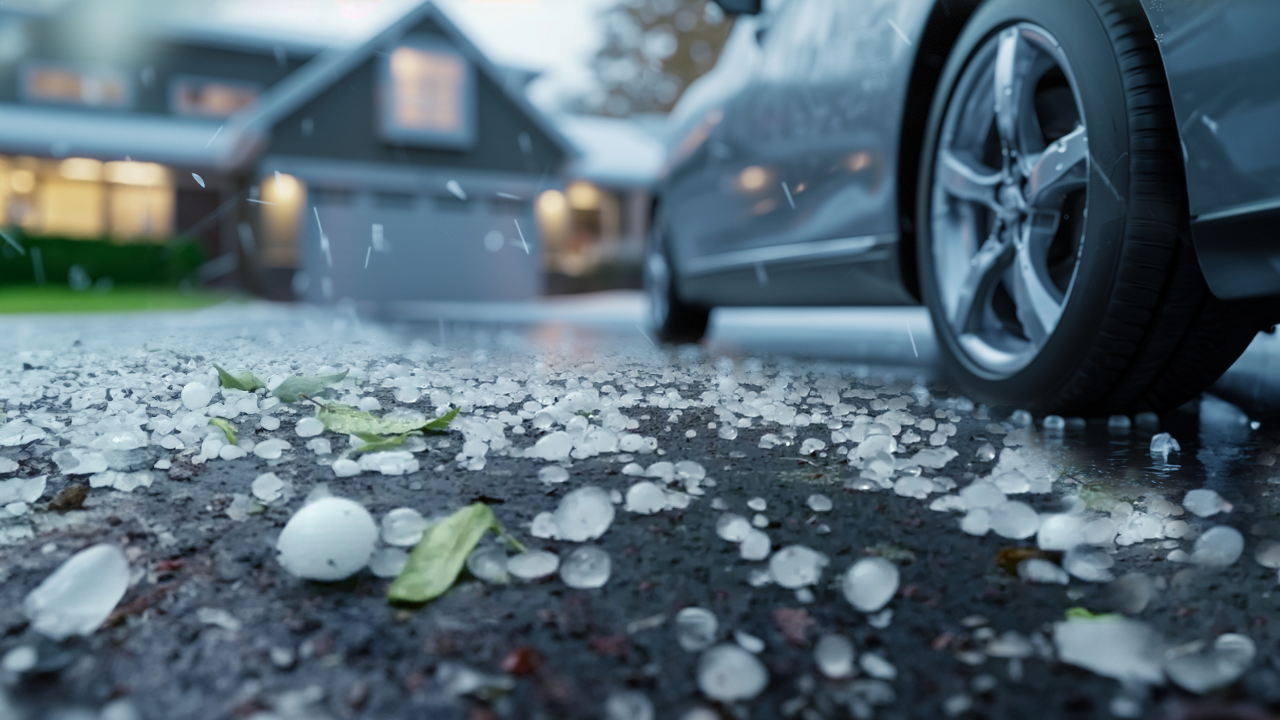Hailstorms can cause significant damage to properties, vehicles, and landscapes. If you've experienced hail damage, it's essential to take immediate and organized steps to ensure safety, proper documentation, and efficient repairs. Here's a step-by-step guide to help you navigate the aftermath of hail damage.
Step 1: Ensure Safety
1. Check for Injuries:
Make sure that everyone is safe. Check for injuries and seek medical attention if needed.
2. Avoid Hazards:
Be cautious of broken glass, sharp debris, and potential electrical hazards. Avoid areas that appear unsafe.
Step 2: Assess and Document the Damage
1. Initial Inspection:
Carefully inspect your property and vehicles for damage. Common signs of hail damage include:
Dents and dings on vehicles
Broken or cracked windows
Damage to roofing materials (missing shingles, dents in metal roofing)
Damage to siding and exterior walls
Damage to outdoor furniture and other items left outside
2. Photograph the Damage:
Take clear and comprehensive photos of all damage. These will be crucial for insurance claims.
3. Detailed Notes:
Write detailed notes describing the extent and location of the damage.
Step 3: Prevent Further Damage
1. Temporary Repairs:
If possible, make temporary repairs to prevent further damage. For example, cover broken windows with plastic sheeting and secure any exposed areas on the roof with tarps.
2. Protect Belongings:
Move valuable or vulnerable items to a safe location to prevent additional damage.
Step 4: Contact Your Insurance Company
1. Report the Damage:
Contact your insurance company as soon as possible to report the hail damage. Provide them with your photos, notes, and any other documentation you have gathered.
2. Understand Your Policy:
Review your insurance policy to understand what is covered and the claims process.
3. Schedule an Adjuster Visit:
Arrange for an insurance adjuster to visit your property to assess the damage.
Step 5: Hire Professional Help
1. Find Contractors:
Research and contact reputable contractors for repairs. Obtain multiple quotes to ensure fair pricing.
2. Check Credentials:
Verify that contractors are licensed, insured, and have good reviews.
3. Prioritize Repairs:
Focus on the most critical repairs first, such as fixing the roof and broken windows.
Step 6: Keep Records
1. Maintain Documentation:
Keep all records of communications with your insurance company, contractors, and any receipts for repairs and temporary fixes.
2. Follow Up:
Stay in contact with your insurance company and contractors to ensure timely progress on repairs.
Step 7: Take Preventive Measures
1. Inspect Regularly:
Regularly inspect your property for any signs of damage or wear and tear that could be exacerbated by future hailstorms.
2. Invest in Protection:
Consider investing in hail-resistant materials for your roof, siding, and windows. Install storm shutters or impact-resistant windows if applicable.
3. Stay Informed:
Keep an eye on weather forecasts and take proactive measures to protect your property when hailstorms are predicted.
By following these steps, you can efficiently manage the aftermath of hail damage, minimize further damage, and ensure a smooth recovery process.
